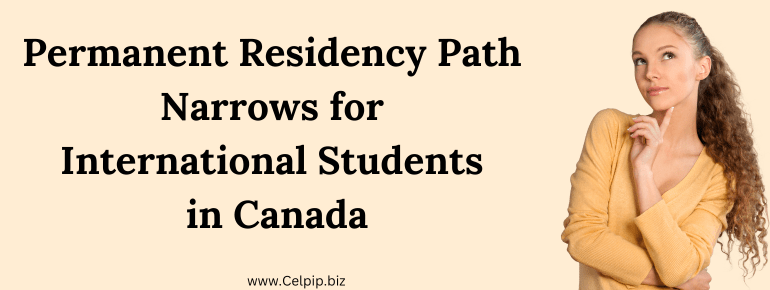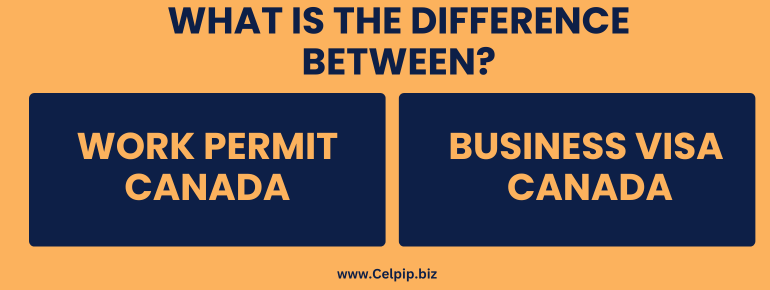Congratulations on obtaining your Canada PR! This momentous achievement marks the beginning of an exciting new chapter in your life.
From activating your PR card to securing housing and healthcare, there are 10 crucial tasks every new immigrant must complete for a smooth transition to life in Canada.
These steps will help you navigate your new environment, understand your rights and responsibilities, and make the most of your new status.
Let’s dive in and ensure your Canadian dream becomes a reality!
10 Things to Do After Getting Canada PR
Securing your Permanent Residency (PR) is a significant achievement, and as you start this exciting chapter, there are essential steps you need to take to ensure a smooth transition.
Don’t miss and read on to know what you should do next:
Activate Permanent Residency
Validate your COPR at the first port of entry or online.
Your Confirmation of Permanent Residence (COPR) must be validated to officially activate your PR status.
If you’re arriving in Canada for the first time, this will typically be done at your first port of entry.
An immigration officer will verify your documents, ask a few questions, and then confirm your PR.
If you’re already in Canada, you might be able to complete this process online or at a local immigration office.
Make sure to bring all necessary documents, including your passport, COPR, and proof of funds if required.
Obtain a Social Insurance Number (SIN)
Essential for working and accessing government services.
Your Social Insurance Number (SIN) is crucial for employment and accessing various government benefits and services.
You can apply for your SIN at a Service Canada office. Bring your COPR and passport, as these documents are needed to verify your identity and status.
The application process is straightforward, and you’ll receive your SIN immediately upon approval.
Apply for Provincial Health Insurance
Coverage varies by province, crucial for healthcare access.
Healthcare coverage in Canada is managed by individual provinces and territories. Once you settle in, apply for your provincial health insurance as soon as possible.
Some provinces have a waiting period (up to three months), so it’s important to get this done early.
You’ll need to provide your PR card or COPR, proof of residence, and identity documents. This insurance will cover medically necessary hospital and doctor services.
Open a Bank Account
For financial transactions and accessing other services.
Having a local bank account is essential for managing your finances, including receiving your salary, paying bills, and setting up utilities.
To open an account, visit a bank of your choice with your PR card, SIN, and proof of address.
Most banks offer special newcomer packages that include benefits like free banking for the first year, credit card options, and financial advice.
Opening a bank account will also help you build your credit history in Canada, which is important for future financial activities like getting a mortgage or loan.
Find Accommodation
Secure housing based on your preferences and budget.
Finding a place to live is one of your top priorities. You can start by exploring rental options or looking into buying a home if you’re ready.
Websites like Kijiji, Craigslist, and realtor.ca are good resources. When renting, be prepared to provide proof of income, references, and possibly a credit check.
Consider the proximity to your workplace, schools, and public transportation when choosing a location.
Explore Employment Opportunities
Research the job market and start your job search.
You can begin your job search by updating your resume to Canadian standards and exploring job boards like Indeed, LinkedIn, and the Government of Canada’s Job Bank.
Networking is also important, so consider joining professional groups and attending job fairs.
If you need to upgrade your skills or credentials, research educational programs and certification courses that can enhance your employability.
Learn About Canadian Taxes
Understand tax obligations and filing requirements.
As a new permanent resident, it’s essential to familiarize yourself with Canada’s tax system.
You’ll need to file an annual tax return with the Canada Revenue Agency (CRA) if you earn income, even if it’s from outside Canada.
Learn about the different types of taxes, such as federal, provincial, and sales tax (GST/HST).
Understanding tax deductions, credits, and benefits available to you can significantly impact your finances.
The tax year in Canada runs from January 1 to December 31, with tax returns due by April 30.
Keep all your income records, receipts for deductions, and other relevant documents organized throughout the year.
You might consider consulting a tax professional or using online resources and software to help with your tax filing.
Build a Social Network
Connect with other immigrants and join community groups.
Building a social network is crucial for your emotional well-being and successful integration into Canadian society.
Start by joining local community groups, immigrant support organizations, and cultural associations.
Attend local events, workshops, and social gatherings to meet people and form connections. Volunteering is another excellent way to build your network while giving back to your community.
Many cities have newcomer centers that offer resources, language classes, and social activities specifically designed to help immigrants settle in.
Joining online forums and social media groups related to your interests or cultural background can also help you stay connected and informed.
Explore Canada
Discover the country’s diverse culture and natural beauty.
Canada is known for its stunning landscapes and multicultural cities. Take the time to explore your new home and experience what makes Canada unique.
Visit national parks, historical sites, and cultural landmarks to immerse yourself in the country’s rich heritage.
Each province and territory has its own attractions, from the Rocky Mountains in Alberta to the cultural festivals in Quebec.
Exploring local neighborhoods, trying different cuisines, and attending cultural events will help you appreciate the diversity that Canada offers.
Whether it’s a weekend road trip or a longer vacation, discovering Canada’s natural beauty and cultural richness will deepen your connection to your new home.
Enroll Children in School
If applicable, register children for the upcoming school year.
If you have school-aged children, enrolling them in school is a top priority. Education is mandatory for children in Canada, and public schools are free.
Start by researching local schools and understanding the education system in your province or territory.
You’ll need to provide documents such as proof of residence, your child’s previous school records, and immunization records.
Contact the local school board or district office for enrollment procedures and deadlines.
Schools in Canada often offer newcomer support services, including language assistance and orientation programs, to help your children adapt to their new environment.
Getting your children settled in school will help them integrate and succeed academically and socially.
Conclusion
Your journey as a Permanent Resident (PR) in Canada is an exciting and transformative experience.
By following the essential steps outlined above, you can ensure a smooth transition and lay a strong foundation for your new life in Canada.
Activating your Permanent Residency is the first critical step, solidifying your status and enabling you to access various benefits and services.
Obtaining your Social Insurance Number (SIN) is essential for employment and accessing government programs, while applying for provincial health insurance ensures you and your family are covered for healthcare needs.
Opening a bank account is crucial for managing your finances and establishing a credit history, which will be important for future financial endeavors.
Finding suitable accommodation is key to feeling settled and secure, whether you choose to rent or buy a home.
Converting your foreign driver’s license or obtaining a new Canadian one allows you to drive legally and explore your new surroundings.
Enrolling your children in school ensures they receive a quality education and helps them integrate into Canadian society.
Understanding Canadian taxes and fulfilling your tax obligations is vital for financial stability and compliance with the law.
Building a social network by connecting with other immigrants and joining community groups can provide emotional support and valuable resources.
By taking these 10 essential steps, you will be well on your way to establishing a fulfilling and prosperous life in Canada.
Embrace the opportunities, build connections, and contribute to your new community. Welcome to your new home, and best of luck on your Canadian journey!
Frequently Asked Questions (FAQs)
- What is the process after getting PR in Canada?
After receiving PR in Canada, you must validate your Confirmation of Permanent Residence (COPR) either at the first port of entry or online if already in Canada. You will then need to obtain a Social Insurance Number (SIN), apply for provincial health insurance, and find suitable accommodation.
- What needs to be updated after getting PR in Canada?
You need to update your address with the Immigration, Refugees and Citizenship Canada (IRCC), inform your employer about your new status, and update any identification documents, such as your driver’s license, to reflect your new residency status.
- What do you get after PR in Canada?
With PR status, you receive a PR card, which serves as proof of your residency. You also gain access to Canadian healthcare, education, and social services, along with the right to live, work, and study anywhere in Canada.
- What happens after arriving in Canada PR?
Upon arrival, you must present your COPR and other necessary documents to an immigration officer for validation. After validation, you can proceed to settle in, apply for a SIN, health insurance, and begin integrating into your new community.
- What happens after I receive my PR?
After receiving your PR, you need to validate your status and complete any necessary administrative steps, such as applying for a SIN and provincial health insurance. You should also begin the process of finding housing and employment, if needed.
- What to do after PR is granted?
Once PR is granted, activate your status by validating your COPR, obtain a SIN, apply for provincial health insurance, and open a bank account. Additionally, start looking for accommodation and, if applicable, enroll your children in school.



